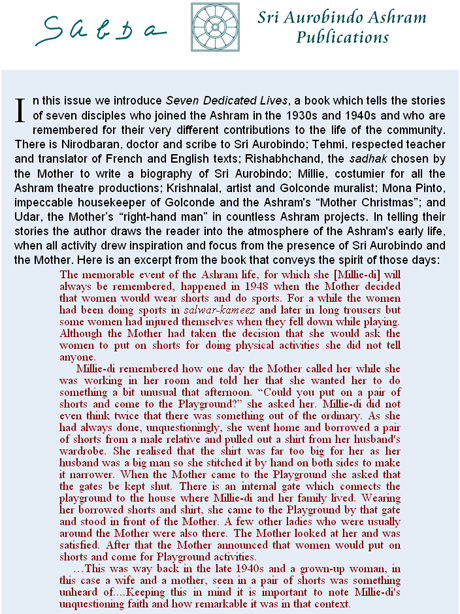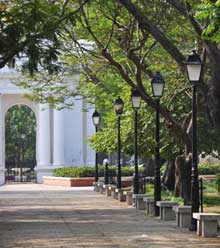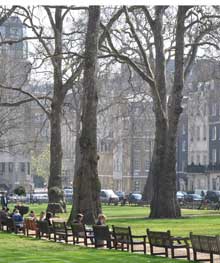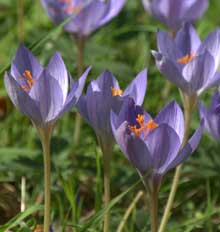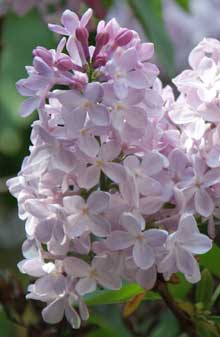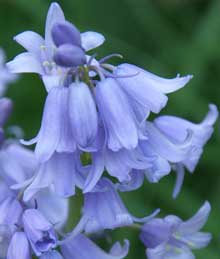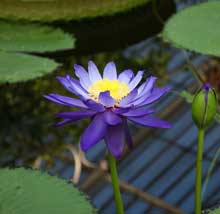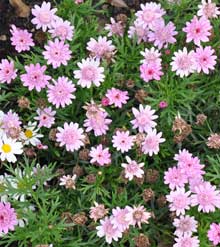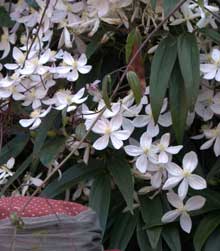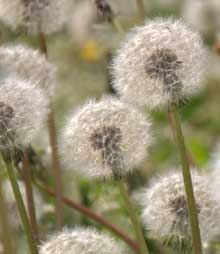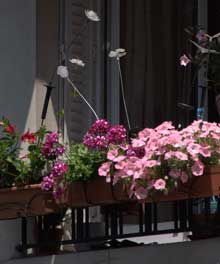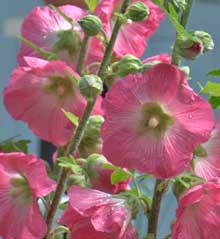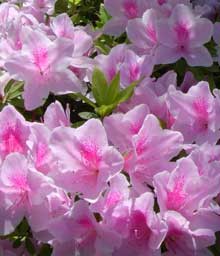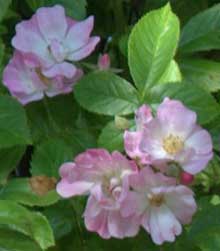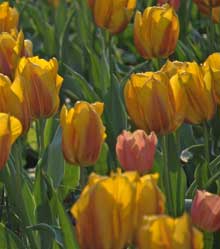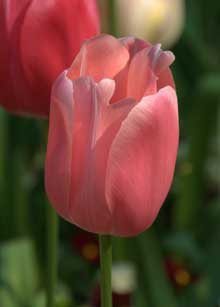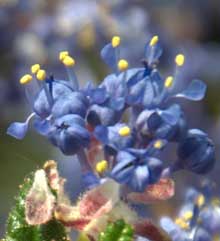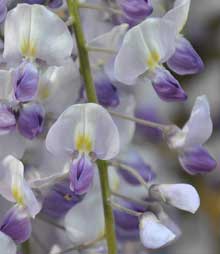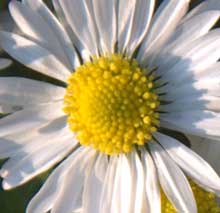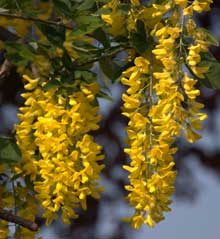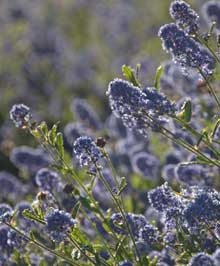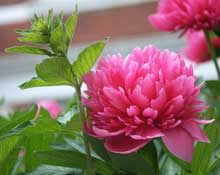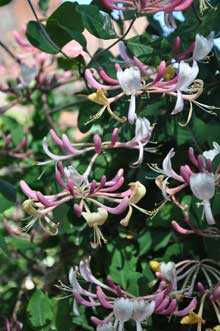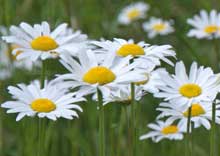From SABDA:
From SABDA:
About Seven Dedicated Lives
These biographical essays provide glimpses into the lives of seven disciples – Nirodbaran, Tehmi, Rishabhchand, Millie, Krishnalal, Mona Pinto, and Udar – who joined the Sri Aurobindo Ashram in the 1930s and 1940s and played active roles in the life of this spiritual community. The book also includes an article on why Christmas is celebrated in the Ashram. The stories of how these sadhaks and sadhikas were drawn to Sri Aurobindo and the Mother and the ways in which they dedicated themselves and their work to the ideal set before them are inspirational and exemplary.
REVIEW
The Mother used to say that those who were with her, assisting her in her work, had also been with her in her former lives whenever she had descended on the earth to carry out her work of divinizing the world:
We have all met in previous lives. Otherwise we would not have come together in this life. We are of one family and have worked through ages for the victory of the Divine and its manifestation upon earth.
7 April 1929
This slim volume, Seven Dedicated Lives, so masterfully written by Sunayana Panda, very palpably brings this fact home to the reader. Sunayana has depicted the raison d’être of each of these seven beautiful people very skilfully and clearly in this book by showing how, from the far corners of India and even from remote England, the Mother’s beacon light guided them to the shores of the then little known and still less important town of Pondicherry to assist her in her stupendous work of transformation.
How true is the saying “He who chooses the Divine, has been chosen by the Divine”! It is intriguing to trace the life story of a young boy from an obscure town in Chittagong, who goes to Calcutta for higher studies, gets involved in the revolutionary movement then in progress, returns to his native town to avoid further harassment by the British CID, then sails away to Scotland to study medicine, holds a lucrative government job in Rangoon as a full-fledged doctor, subsequently loses the job because of his black marks in the police records, comes to Pondicherry to visit his niece and finally, lives on in the Ashram for the rest of his very long and fruitful life, in spite of his early avowal to his Guru that spiritual life was not his cup of tea! In retrospect do we not see the beautiful Hands delicately but surely pulling the strings to bring the chosen one to his ultimate destination?
In a similar way, on returning to India from England, a brilliant aeronautical engineer from Hubli finds himself jobless because he is overqualified. His well-to-do Roman Catholic family disowns him because he is engaged to a Protestant English girl. He is desperate to make money so that he can bring his sweetheart to India and marry her. He comes to Pondicherry, starts a business, makes money, marries his fiancée, lives in grand style and now his sole aim is to enjoy life to the full. But then he comes for the Darshan, he sees the Mother and Sri Aurobindo, and he is irrevocably caught! He winds up his business and joins the Ashram with his young wife and baby daughter. In no time he becomes a most trustworthy and an indispensable instrument of the Mother. Working day and night, he assists her in her projects and starts many profitable industries and businesses for making the Ashram financially self-sufficient.
The young wife, a ravishing beauty at the age of twenty-six and English to the core, totally uninterested in either religion or spirituality, has only one aim in life—to make a very happy English home with her handsome husband and her darling newborn daughter. But the unseen Power is again at work. She turns out to be an ideal Hindu wife, who follows her husband’s dharma, sacrificing her own likes and dislikes in the process, and joins the Ashram. To the end of her days she lives a most disciplined life, almost like an ascetic. The Mother had chosen her instrument well to run her newly built, dream guest house with the utmost efficiency and the legendary English standards of cleanliness! For, this young English lady, who had had some experience only in secretarial work, now brings out her hidden talent for organization, administration and bookkeeping.
The Mother needs an ideal teacher to teach English in her school—the flame of aspiration is at once lit in the heart of a young, versatile, extremely gifted Parsi lady, who is a much sought after professor in the prestigious Sophia College of Bombay. She resigns from her job, joins the Ashram and teaches in the Ashram school until she is well past eighty.
A fine artist is needed for decorating the Mother’s rooms—just the right man comes all the way from Gujarat, having been trained in Santiniketan by the well-known painter Nandalal Bose, and serves her till the end of his life.
The Mother wants to break the rigid dress conventions of Indian women—a young housewife from a very conservative Bengali Brahmin family who has joined the Ashram only a few years back during World War II, appears in the Playground dressed in white shirt and shorts to set an example for the other Ashram ladies! At the Mother’s bidding she courageously performs a very revolutionary role in the bold French play, Vers l’Avenir, written by the Mother herself, which deals a heavy blow to the age-old, artificial social concepts of marriage! To whatever the Mother asks her to do, however difficult it may be, this young housewife has only one answer: “Yes, Mother.”
Generally, the Jains belong to a very orthodox community who do not readily take to alien ways. An inroad has to be made in this community! A very well educated Jain young man happens to read some political writings of Sri Aurobindo and straight away falls in love with the Master’s sublime prose. He is at the helm of his family’s textile business and so has miles to go before he can dedicate himself completely to the Master. He fulfils all his duties, trains able administrators to take over from him and comes to the Ashram to serve the Mother and Sri Aurobindo with his entire being. Since then, starting with his family members, there has been a steady influx of Jains to the Ashram.
Having been very closely connected with all the personalities mentioned in Seven Dedicated Lives, I am struck by the author’s deep insight into their characters and aspirations which I had marked only because I had seen them at very close quarters. How a young person who is more than two generations removed from them can come so near the truth is really amazing! Sunayana has a very lucid, fluid and warm style which makes reading her book a really pleasant experience. The only regret is that like all good things it comes to an end much too soon.
This review would remain incomplete without a word of congratulation to the cover designer, Giles Herdman, who has chosen a very appropriate floral arrangement for his design; the spiritual significance given by the Mother to this beautiful flower is “Offering”!
— Aniruddha Sircar
Aniruddha-da (Babu-da) settled in the Ashram in 1946, completed his schooling at the SAICE in 1955, and has since been teaching English at the Ashram school.
November 2009
*****************************
From Sri Aurobindo’s Action (Feb. 2012)
Travel as Pilgrimage
Following in their Footsteps : Discovering Sri Aurobindo’s Life in England and the Mother’s Life in Japan
by
Sunayana Panda, London:
First Feature Ltd. 2010,
pp.126. Price: Rs.160/-
_____________________________
Sunayana Panda’s second book, Following in their Footsteps, is an important addition to a growing body of literary works related to the early life of Sri Aurobindo and the Mother. The volume comprises slightly edited versions of essays that had appeared in The Golden Chain, the alumni journal of the Sri Aurobindo International Centre of Education, Pondicherry (SAICE). Two additional essays, both by Sunayana, earlier published elsewhere, find place here. The pieces, ‘Sri Aurobindo the Poet’ and the ‘The Mother Seen as an Artist’ are relevant to the theme and enhance our understanding of the subject.
Although many biographical accounts of the Mother and Sri Aurobindo exist in the public domain, there has been insufficient attention paid to the details of the context and habitat that underlie their experience in various places. In accordance with the current historiography that draws attention to details that traditionally escaped the attention of chroniclers of the past, Sunayana shows us glimpses of the lives that young Aurobindo and the adult Mirra lived in England and Japan respectively. Written in the mode of travel as pilgrimage, Sunayana’s approach reminds us of accounts by the Indian pilgrims who braved arduous journeys to holy places in search of spiritual truths.
Sunayana’s travel must have had its own share of difficulty. It is true that travel today has become comfortable thanks to inter-continental flights, train/bus ride, comfortable hotels, and multilingual guides. Instruction and self-help guidance reach us through the multimedia and online sources. Travel today is no longer the hazardous journey that the intrepid performed to Jerusalem, Badrinath, Kedernath or the Kailash Mansarovar. And yet, the sites and sounds of a bygone era have not lost their earlier charm and fascination, despite the passage in time. This aspect comes out very vividly in Sunayana’s story.
To begin with, the landscape today, especially the urban cityscape, is no longer the same as before. Both England and Japan were badly bombed during the war. Mercifully, the places associated with Sri Aurobindo in Manchester, London and Cambridge, escaped the attrition of war. Similarly, Kyoto the Japanese city that housed The Mother was lucky to avoid aerial bombardment by the Allied Forces. The war brought massive destruction to other cities like Tokyo, Hiroshima and Nagasaki. It is indeed tragic that precious homes and sites that were part of the world heritage perished thanks to the ravages of war.
It is commendable that the author of the book devoted her time, energy and resources to research into the background of the cities and the institutions, including roadways, buildings, cartography, educational systems, and admission details, courses of study and student log books. The volume shows evidence of an impressive background work that has culminated in a fine production marked by lively details and illustrations.
The book is divided into nine chapters, all written in the form of journal articles, each piece is fairly independent and yet related to the overall structure of the volume. Sunayana brings to our mindscape, the houses in Manchester and London, She records many exciting details: Sri Aurobindo at Saint Paul’s School, at Cambridge, the unveiling of the Blue Plaque in London and finally an account of the Mother in Japan.
As we travel with Sunayana and Giles, we see a pair which combines several roles at the same time: as participant-observers, and as scholars, guides and believers. And thus, as we venture into Manchester, we learn crucial details underlying the journey of the Ghose children to Britain. The Magistrate of Rangpur Edward Glazier, a friend of Krishna Dhan Ghose, we learn, was a cousin of William Drewett, under whom the children studied.
Similarly, we discover Octagon Church of Manchester; learn that the city was known at one time as the ‘Cottonopolis’. We walk on the Stockport Road which was an important thoroughfare and on which was located the church where Mr. Drewett preached. Sri Aurobindo lived with his two brothers and the Drewett family in this area, on Shakespeare Street, from the age of seven to twelve. He was taught English grammar and Latin by Mr. Drewett and Mrs. Drewett taught him French, arithmetic and geography. In 1884, Mr. Drewett and his family emigrated to Australia and the boys were sent to St. Paul’s school, London. As Sunayana viewed these scenes and recalled the history, she imagined ‘three boys living in a large house with one or two gardens, surrounded by a large and loving family.’
What was London one hundred twenty-five years back, wonders Sunayana. Britannia ruled the waves and Sri Aurobindo’s adolescence was spent when the British Empire was at its peak. The gentleness of the city, observes Sunayana, ‘nurtured the poet in him [Sri Aurobindo] while its hardships prepared the revolutionary’s Spartan spirit.’
We next get to know about the history of St. Paul’s School which was founded in 1509 by John Colet who was the Dean of St. Paul’s Cathedral. It was the first school to teach Greek and Latin, two of the subjects Sri Aurobindo excelled at. The school boasted a galaxy of luminaries such as Milton, Halley (of the famous Halley’s Comet), G.K. Chesterton and others. Sri Aurobindo studied here up to the age of fifteen. He would recall later: ‘I was known as a very promising scholar at St. Paul’s. After that I lost that reputation. The teacher used to say that I was lazy and was deteriorating… because I was reading novels and poetry.’ In the volume On Himself he recalled later that during his life in England, as he grew older, he was conscious of his inner life, the imminent revolution and the role he was destined to play. Significantly enough, unknown to him, on the other side of the English Channel was growing up young Mirra, destined to be his spiritual collaborator in later life.
Sunayana next takes us to Cambridge University. Founded in 1209, the University is associated with some of the best in English life and culture. Its alumni include a host of celebrities: Newton, Darwin, Wordsworth, Byron and Milton. We marvel at the majestic King’s College Chapel and learn that Sri Aurobindo studied at King’s from 1890 to 1892. The famous Oscar Browning was impressed by Sri Aurobindo’s entrance examination papers. In a letter Sri Aurobindo wrote: “The great OB afterwards asked me where my rooms were and when I had answered he said ‘that wretched hole!… How rude we are to our scholars! We get great minds to come down here and then shut them up in that box! I suppose it is to keep their pride down”.
We cross continents and travel to Asia and to Japan. Sunayana recalls the many vivid accounts the Mother gave in later life about Japan: she spoke highly of the Japanese approach to beauty that governed their domestic and national life. Fortunately, Kyoto was spared from bombing. Sunayana tells us of the famous Kyoto protocol regarding global warming and how it can be slowed down to protect the planet. She sees an underlying connection between this international agreement and what the Mother said of Nature in Prayers and Meditations.
Sunayana informs us of many relevant details as she goes along: she speaks of the Mother’s moving description of the cherry blossom and brings in an appropriate manner Sri Aurobindo’s essay ‘The Bourgeois and the Samurai’. We learn that as Paul Richard and Mirra travelled in Japan, they were shadowed by the British Intelligence that suspected them of having links with Rash Behari Bose and Sri Aurobindo. She knew of the British desire ‘to intern her on the slightest suspicion of carrying messages for Sri Aurobindo by the exiled nationalists’. She spent three years in Kyoto. Here she must have visited the various Zen gardens, monasteries and the Daitoku-ji temple complex.
Not many of us can travel to the sacred places that Sunayana and Giles were fortunate to visit. They brought to us the rich spirit and flavour of these places blessed by the Master and the Mother. It is the joy of travel and the desire for learning that typify Sunayana’s journey. She creates the intellectual-spiritual context as she travels to far off places. She was interested, she says aptly, in recreating ‘the psychological and historical context in which she [the Mother] lived’.
Following in their Footsteps is a fascinating read. Perhaps the book could have done better with an introduction. Similarly, a degree of repetition in a few places could have been avoided. On the whole, however, it brings in a new approach to reading the lives of the Modern Avatars. Attractively produced and illustrated, it is a book that would appeal to a wide audience.
Sachidananda Mohanty

